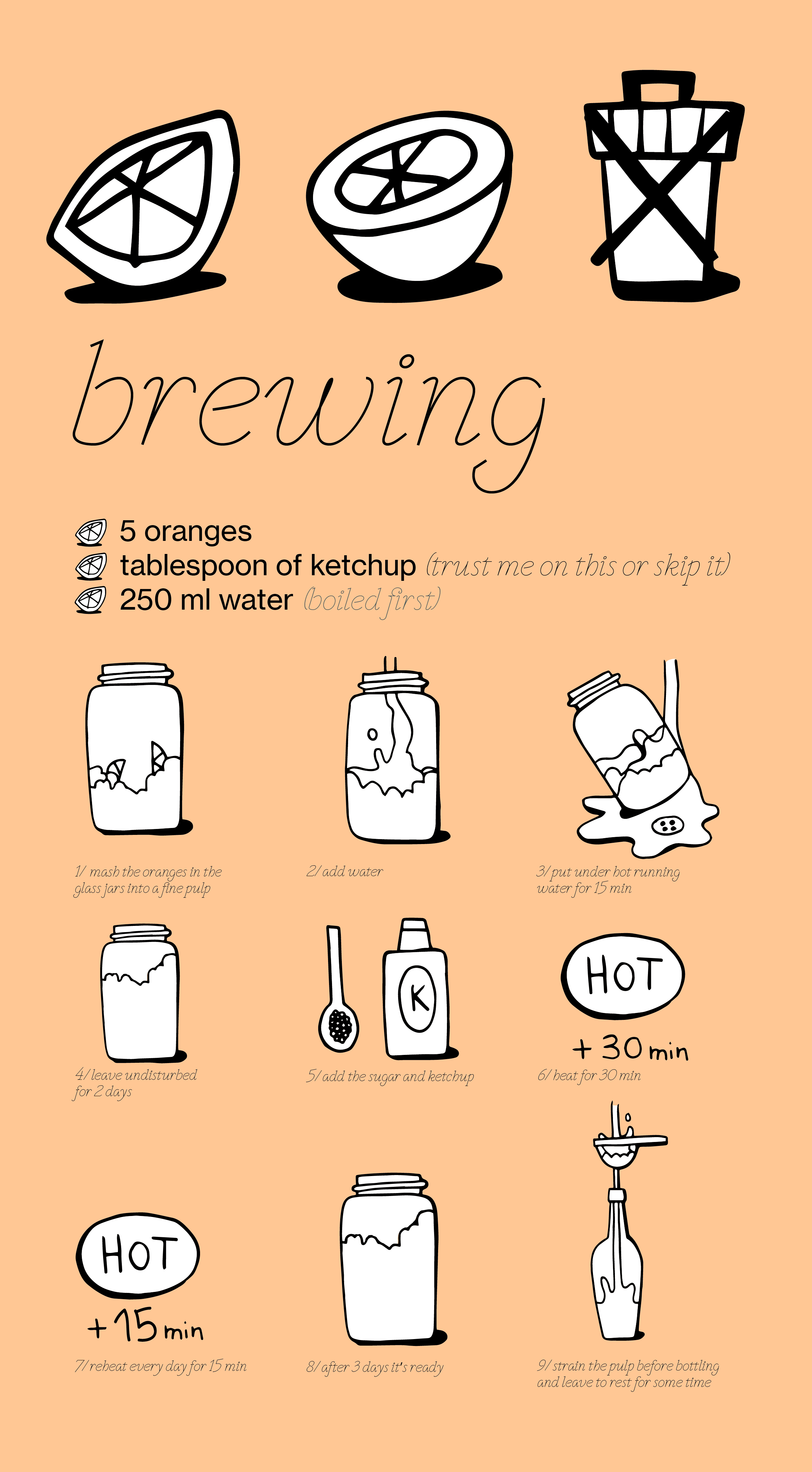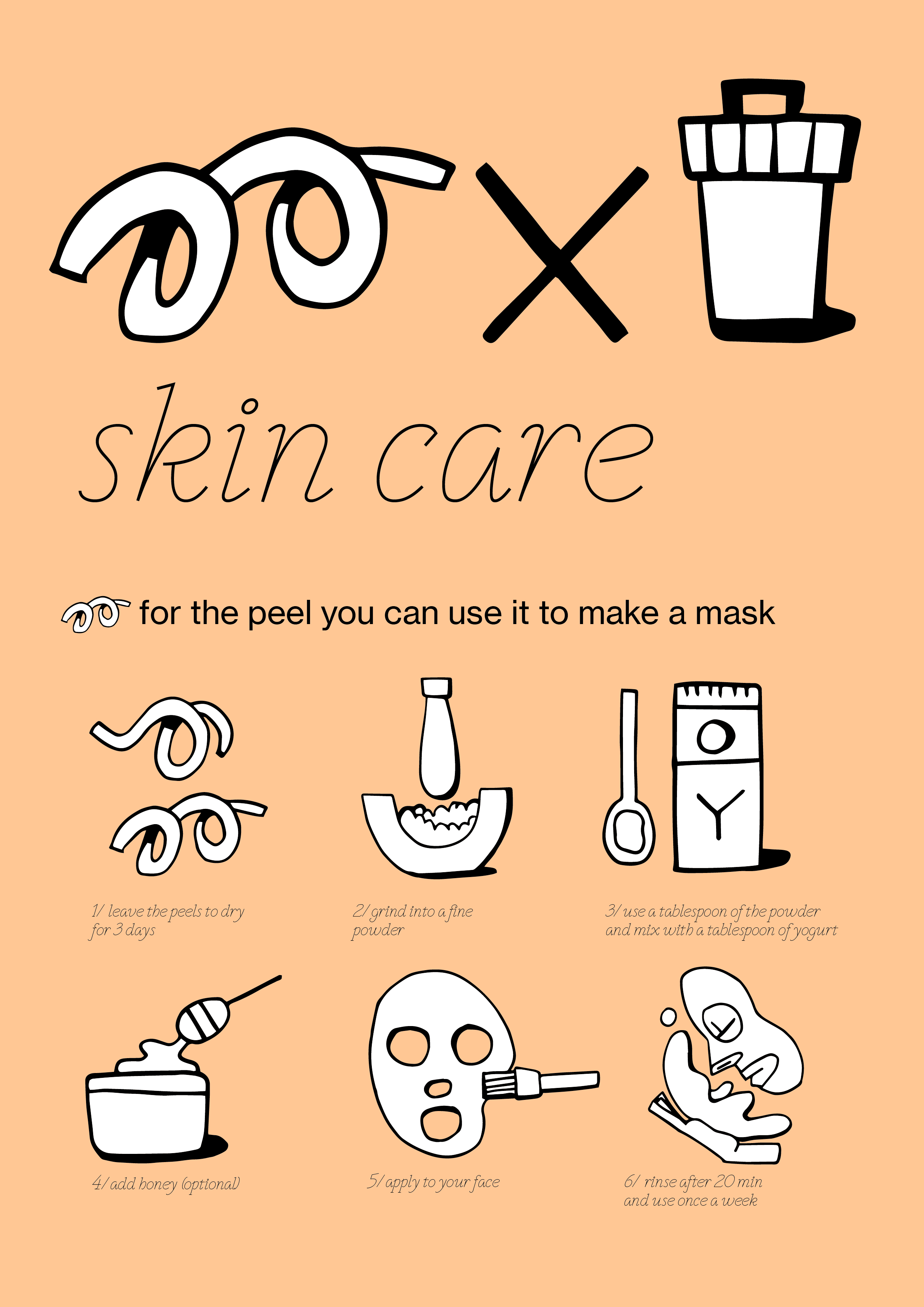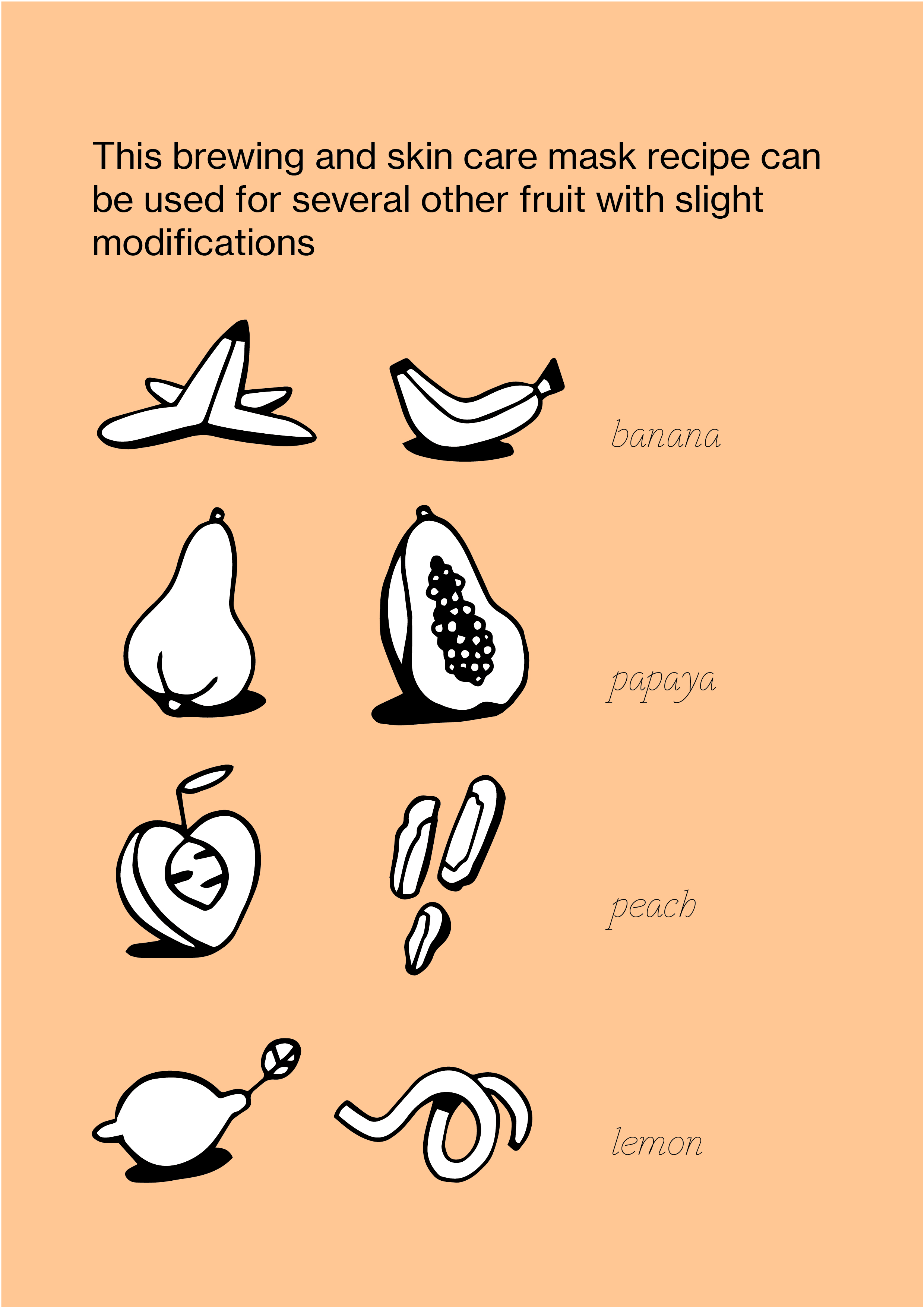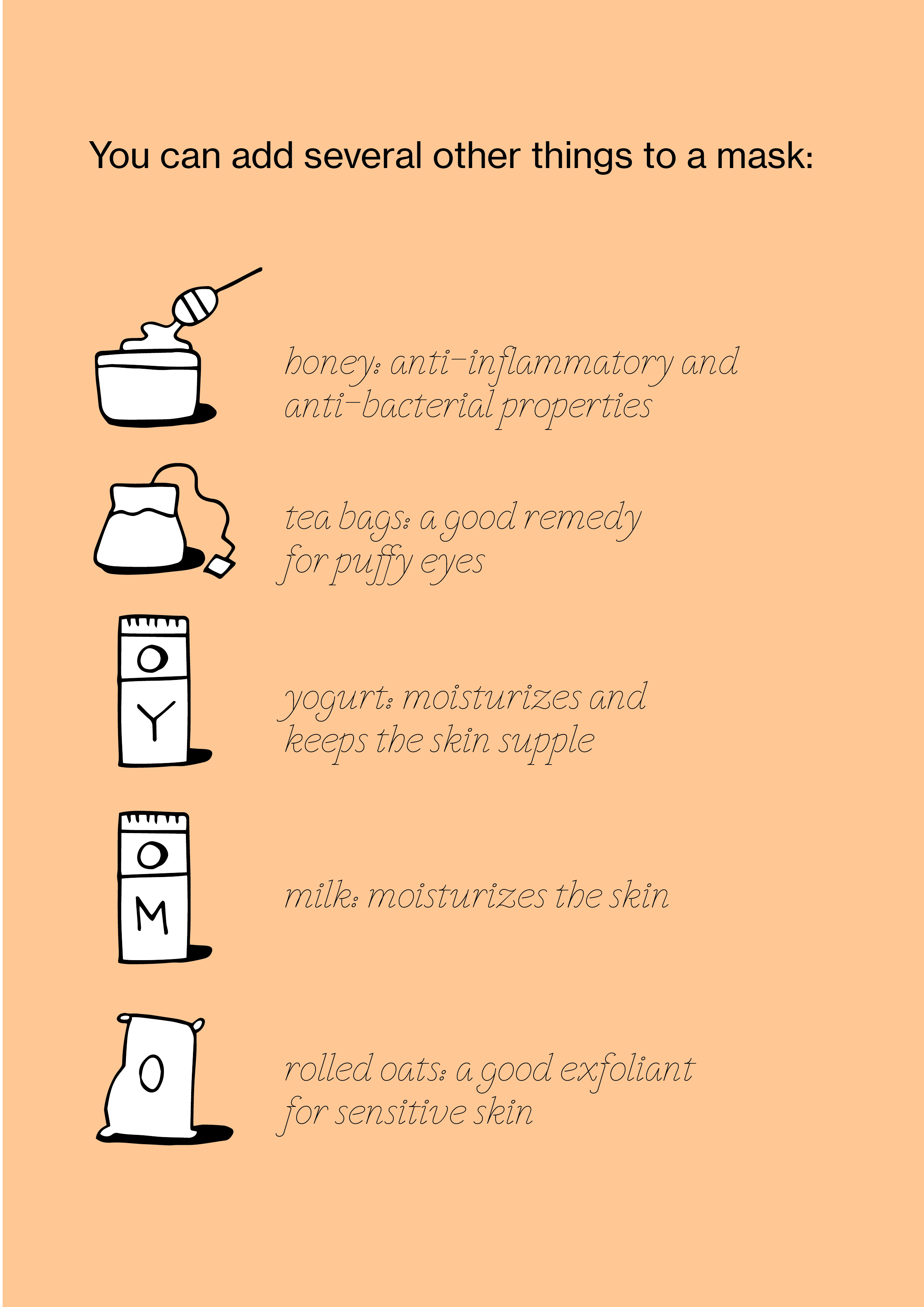Research
Senka Milutinovic 0962433 GD2
Theory
Outcome




For my project, I designed what would be the start of recipes for brewing from fully ripe fruit costumers won't all be able to eat.
This method would also cut down on the water used in the overall production and transportation of alcohol, as well as form a newfound appreciation among consumers for the amount of time and effort needed into producing a good they take for granted.
The sample recipes consist of oranges yet a variety of different fruit can be used. Some with a different degree of sugar (and water) based on the sugar consistency of the fruit itself.
If I had more time to develop this project further, I would like to have collaborated with initiatives such as Groente Zonder Grenzen and GroenCollect. GZG because, from my experience of volunteering there, there still ends up a lot of fruit in the trash as it if more difficult to make a dinner/meal out of.
This collaboration would for the network needed to slowly start assembling a freeganism collective within Rotterdam, in an effort to try and abolish laws that prohibit collecting(or as those laws state: stealing)'trash', aka the food waste chucked by large supermarket chains.
With community effort, this freeganism collective could start its own skin care and brewing production and distributed the knowledge gained through these processes.
For the recipe regarding skin care masks, any residual access from the fruit could be used for composting/ making fertilizer. Such as in the case of a banana peel, if a person is unable to mash it completely the rest should be composted. If you want to avoid the moisture and smell that comes with composting you could always dry the banana peels in the sun first.
If you want to find out about the nutritional value these fruits have for your skin, feel free to check some of the following links out:
- zerowastewisdom
- rubbishbegone
Some initiatives have served as inspiration for this approach and they are the following:
- fruu
- byre
- upcircle
More about this could be found in the Research page in the 'reusing fruit waste' section